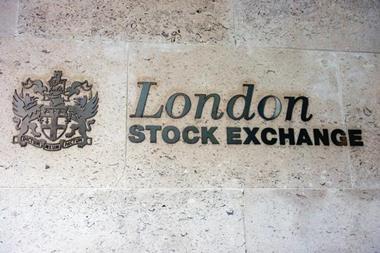It’s not all bad news. The recession of 2009 will create opportunities for some insurers.
The economic slowdown has hit some insurers hard, but others stand to gain. Insurers’ financial strength is under the spotlight after the banking crisis and the near collapse of AIG. Those with the strongest balance sheets will be at an advantage, with investors and buyers preferring the most secure companies.
While the industry’s capital levels have been squeezed by mark-to-market losses on investment portfolios and catastrophe losses, it has avoided the worst of the toxic assets that bedevilled the banks. A re-rating of the sector appears unlikely at present; individual performances vary and some insurers – RSA, Amlin and Hiscox – are particularly strong.
The AIG effect
Business is likely to migrate to other carriers, given AIG’s rating issues and the general perception of risk associated with the company. The insurer is the largest writer of excess and surplus lines and had been aggressively writing US and European property and casualty, airline, UK commercial and motor fleet insurance.
A recent survey of risk managers by Advisen found that 71% of AIG commercial-lines policyholders planned to get quotes from AIG’s rivals when their policies were due for renewal. Lloyd’s insurers, major insurance groups and specialist carriers are likely to benefit from any migration of business. Hiscox, for instance, is planning to increase its 2009 capacity for its Syndicate 33 and launch a new syndicate to capitalise on these opportunities such as this. Insurers will also be able to pick up experienced staff from AIG.
Market cycle
The rating environment is widely expected to change next year, as depressed investment returns, an active hurricane season and AIG’s difficulties combine to end the soft cycle.
Insurers are already reporting a hardening of rates in areas such as reinsurance, especially property reinsurance lines, offshore energy and large property risks. Munich Re said recently that it was aiming to increase rates across its book by an average of 10% in 2009. RSA has reported positive rates movement year-on-year in the third quarter across the whole of its UK general insurance portfolio.
Insurers should position themselves to take full advantage of rating movements.
New products and acquisitions
As the previous points demonstrate, there is potential for insurers to reallocate capacity and launch new products, whether to target lines of business that are beginning to harden or to exploit the perceived weakness of other carriers. Expect insurers to push into sectors such as excess of loss, professional lines and large property risks.
Good-quality businesses are likely to go on the block in the coming months. Some of AIG’s non-core operations are already on the market and it may still need to sell core general insurance assets in order to repay its government loan. HSBC is looking to sell part of its underwriter business and other banks could look to dispose of capital-intensive insurance businesses. Royal Bank of Scotland continues its search for a buyer for its insurance arm.
Bolt-on acquisitions and large strategic buys could be a useful way to position a company for growth in anticipation of hardening rates. Major acquisitions will be difficult to complete in this market, however. Sale prices will be suppressed.
michael.faulkner@instimes.co.uk
Key points
• Insurers with the strongest balance sheets will be at an advantage.
• There will be opportunities to win business and staff from AIG.
• The market will begin to turn in 2009.
• Insurers will move into new lines of business.
• Attractive acquisitions opportunities are likely to arise.




































